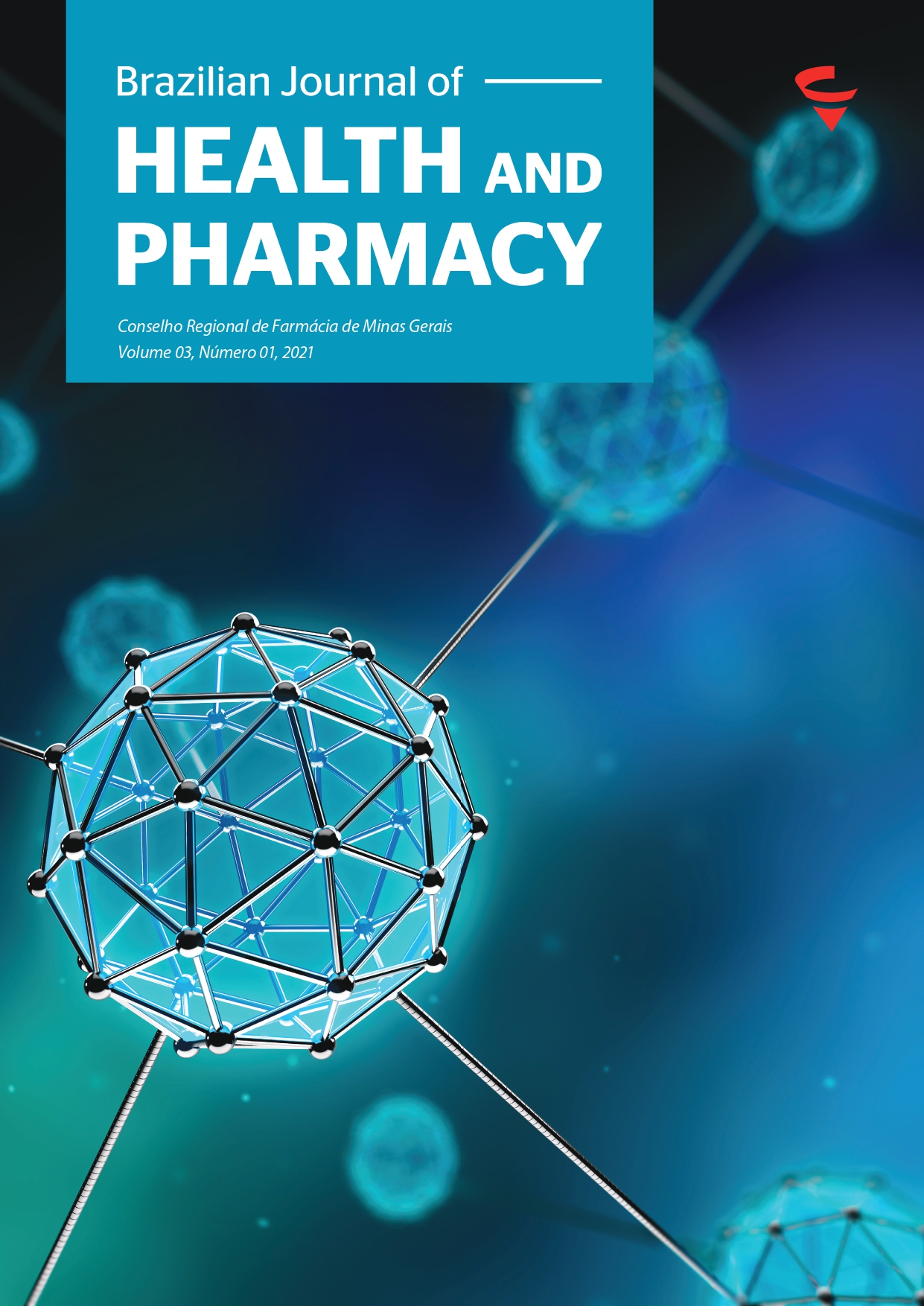Resumo
O aciclovir (ACV) é usado no tratamento de doenças infecciosas causadas pelo vírus do herpes. Sua elevada coesividade dificulta o encapsulamento e compromete a qualidade final do produto manipulado. O objetivo deste trabalho foi selecionar excipientes capazes de melhorar as propriedades de fluxo do ACV em relação à preparação de cápsulas manipuladas contendo 400 mg do insumo farmacêutico ativo (IFA) e garantir a taxa de dissolução preconizada. Oito misturas de excipientes (A – H) constituídas distintamente por dióxido de silício coloidal (DSC), amidoglicolato de sódio, talco farmacêutico, hidroxipropil celulose e celulose microcristalina (MCC) foram avaliadas quanto à fluxibilidade, onde quatro delas (A, B, C e E) foram selecionadas para compor as formulações de cápsulas por exibirem os menores valores referentes ao Fator de Hausner e ao índice de Carr. O doseamento do ACV exibiu teor de pureza de 99,3%. Embora todas as formulações tenham sido aprovadas nos critérios de determinação de peso, somente as cápsulas contendo ACV e mistura E (DSC:MCC) alcançaram a taxa de dissolução especificada. Isto indica que a associação de tais excipientes proporcionou porosidade apropriada às partículas de ACV através da redução da coesão interparticular, fato que favoreceu a penetração de água na mistura pulvérea empacotada. Por fim, sugere-se que a produção de cápsulas manipuladas contendo ACV 400 mg seja realizada usando invólucros de tamanho Nº00 com aproximadamente 190 mg de DSC e MCC (2,5:97,5) a fim de auxiliar o escoamento do fármaco, proporcionar uniformidade de peso adequada e alcançar a taxa de dissolução desejada com o intuito de promover uma terapia antiviral efetiva.Acyclovir (ACV) is used to treat infectious diseases caused by the herpes vírus. Its high cohesiveness makes encapsulation difficult and compromises the final quality of the compounded product. The aim of this work was to select excipients capable of improving the flow properties of ACV in relation to the preparation of compounded capsules with 400 mg of the active pharmaceutical ingredient (API) and to guarantee the recommended dissolution rate. Eight blends of excipients (A – H) distinctly composed of colloidal silicon dioxide (DSC), sodium starch glycolate, purified talc, hydroxypropyl cellulose and microcrystalline cellulose (MCC) were evaluated for flowability, where four of them (A, B, C and E) were selected to compose the capsule formulations because they exhibit the lowest values referring to the Hausner Factor and the Carr index. The ACV assay showed purity content of 99.3%. Although all formulations have approved the weight determination criteria, only capsules containing ACV and E blend (DSC:MCC) achieved the specified dissolution rate. This indicates that the association of such excipients provided appropriate porosity to the ACV particles through the reduction of interparticular cohesion, a fact that favored the penetration of water in the packaged powder blend. Finally, it is suggested that the production of compounded capsules containing ACV 400 mg be carried out employing capsule shells of size Nº00 with approximately 190 mg of DSC and MCC (2.5:97.5) in order to aid the flow of the API, provide adequate weight uniformity and achieve the desired dissolution rate to promote an effective antiviral therapy

